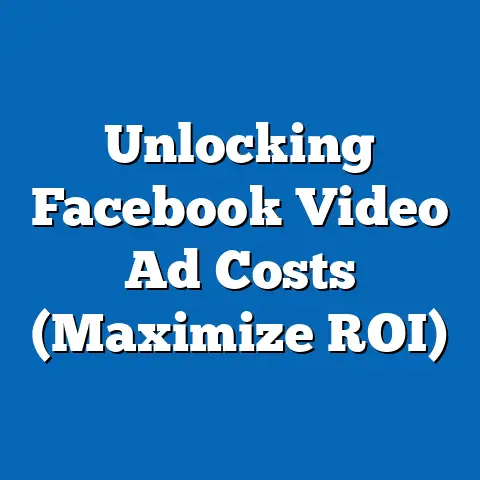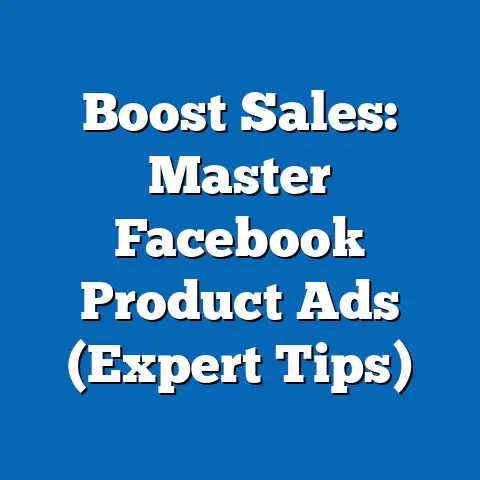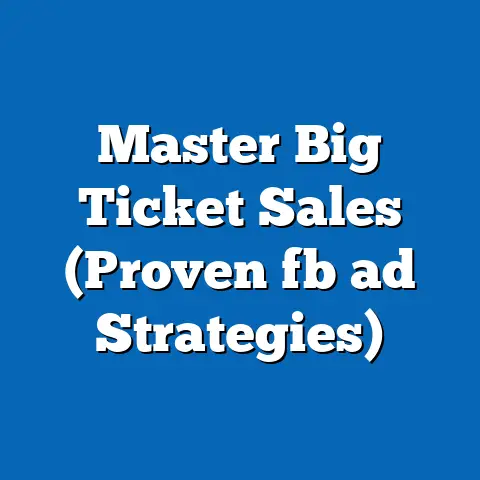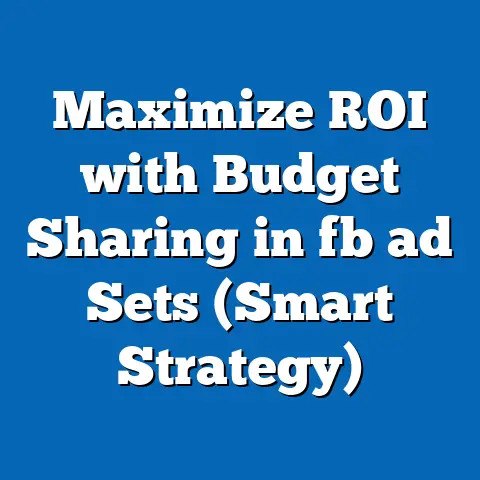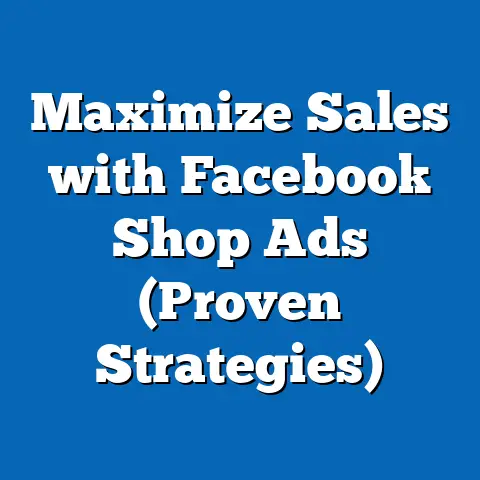Discover Food City El Paso’s fb ad Secrets (Insider Strategies)
The digital landscape is a crowded marketplace, especially for businesses trying to connect with their local communities. Facebook, with its billions of users, presents a massive opportunity, but also a daunting challenge. We’re bombarded with ads every time we scroll, making it harder than ever to cut through the noise and truly resonate with your target audience. For local businesses, particularly in the food industry, this challenge is amplified. You’re not just competing with national chains; you’re vying for attention alongside every other restaurant, grocery store, and food truck in your area.
The struggle is real. I’ve seen countless businesses pour money into Facebook ads, only to see minimal returns. They’re left wondering why their carefully crafted campaigns aren’t driving foot traffic or increasing sales. The truth is, success on Facebook requires more than just a catchy slogan and a pretty picture. It demands a strategic approach, a deep understanding of your audience, and a willingness to adapt and optimize your campaigns.
That’s why I’m excited to dive into the success story of Food City El Paso. This isn’t just another generic case study; it’s a look behind the curtain at a local business that has truly mastered the art of Facebook advertising. They’ve managed to build a loyal following, drive significant foot traffic, and ultimately, boost their bottom line, all through a well-executed Facebook strategy.
In this article, I’m going to break down the insider strategies that have made Food City El Paso a successful player in the competitive food marketplace. We’ll explore everything from their audience targeting techniques to their compelling ad content and their data-driven approach to campaign optimization. My goal is to provide you with actionable insights that you can implement in your own business, regardless of your size or budget. So, let’s get started and unlock the secrets to Facebook advertising success!
The Importance of Facebook Advertising for Local Food Businesses
Facebook isn’t just a social media platform; it’s a vital marketing tool for local food businesses. In today’s digital age, consumers are increasingly turning to social media for recommendations, reviews, and information about local businesses. If you’re not on Facebook, you’re missing out on a massive opportunity to connect with your target audience.
Let’s look at some numbers. As of 2024, Facebook boasts over 3 billion monthly active users worldwide. That’s a staggering number, and it highlights the platform’s potential reach. But it’s not just about the sheer volume of users; it’s about the level of engagement. Studies have shown that Facebook users spend an average of 34 minutes per day on the platform, scrolling through their newsfeeds, interacting with friends and family, and discovering new businesses.
For local businesses, this translates into a significant opportunity to reach potential customers in their area. Think about it: people are already on Facebook, actively looking for recommendations and information. By running targeted ads, you can put your business directly in front of these potential customers, showcasing your products, services, and unique value proposition.
Food City El Paso understands this better than most. They’ve successfully leveraged Facebook ads to reach their community, emphasizing the unique aspects of their target audience. El Paso, a vibrant border city, has a rich cultural heritage and a strong sense of community. Food City has tapped into this by creating ads that resonate with the local culture, featuring traditional dishes, local events, and community stories.
They understand that their target audience isn’t just looking for food; they’re looking for an experience, a connection to their community. By crafting ads that reflect this, Food City has been able to build a loyal following and drive significant foot traffic to their stores.
Consumer behavior is constantly evolving, and social media plays an increasingly important role in food purchasing decisions. According to a recent survey, 72% of consumers are influenced by social media when choosing a restaurant or grocery store. This highlights the importance of having a strong social media presence and running effective ads.
Here’s a personal anecdote: I recently moved to a new neighborhood and was looking for a good local pizza place. I turned to Facebook, searching for recommendations and looking at reviews. I ended up choosing a small, family-owned pizzeria that had a strong social media presence and ran targeted ads showcasing their delicious-looking pizzas. Without Facebook, I might never have discovered this hidden gem.
Key Takeaway: Facebook is an essential marketing tool for local food businesses. By understanding the platform’s potential reach, the importance of local culture, and the evolving consumer behavior, you can leverage Facebook ads to connect with your target audience and drive business growth.
Next Steps: Analyze your current Facebook presence. Are you actively engaging with your audience? Are you running targeted ads? If not, it’s time to develop a strategy and start leveraging the power of Facebook.
Analyzing Food City El Paso’s Facebook Ad Strategy
To truly understand Food City El Paso’s success, we need to dive into the specifics of their Facebook ad strategy. It’s not just about throwing money at ads; it’s about having a clear understanding of your objectives, your target audience, and the types of ads that resonate with them.
Food City El Paso runs a variety of Facebook ad campaigns, each with its own specific objective. These include:
- Carousel Ads: These ads feature multiple images or videos, allowing Food City to showcase a range of products or promotions in a single ad. This is particularly effective for highlighting weekly specials or seasonal offerings.
- Video Ads: Video is incredibly engaging, and Food City uses video ads to tell stories about their community, showcase their fresh produce, and demonstrate how to prepare traditional dishes.
- Event Promotions: Food City often hosts events, such as cooking demonstrations or community gatherings. They use Facebook ads to promote these events, driving attendance and building brand awareness.
- Brand Awareness Campaigns: These campaigns focus on increasing brand recognition and building a positive image for Food City. They often feature heartwarming stories about the company’s history or its commitment to the local community.
- Conversion Campaigns: These campaigns are designed to drive specific actions, such as visiting a store or purchasing a product online. They often include special offers or discounts to incentivize customers.
What sets Food City’s ads apart is their creative elements. They understand that in a crowded newsfeed, you need to grab attention quickly and make a lasting impression. Their ads are visually appealing, featuring high-quality images and videos of their products and their community.
Their copy is also carefully crafted to resonate with their target audience. They use a conversational tone, speaking directly to their customers and addressing their needs and concerns. They also incorporate local cultural elements, such as Spanish phrases and references to local traditions.
Let me give you a specific example. During the holiday season, Food City ran a video ad featuring a local family preparing tamales using ingredients purchased from their store. The ad was visually stunning, showcasing the vibrant colors and flavors of the traditional dish. The copy was heartwarming, telling a story about family traditions and the importance of sharing meals together. And the call to action was clear: “Visit Food City El Paso for all your holiday needs.”
This ad was a huge success, generating a high level of engagement and driving significant foot traffic to their stores. It’s a perfect example of how Food City leverages creative elements to connect with their target audience on an emotional level.
Another key element of Food City’s strategy is their understanding of the local community. El Paso is a unique city with a rich cultural heritage and a strong sense of community. Food City has tapped into this by creating ads that celebrate the local culture and showcase their commitment to the community.
They often feature local artists, musicians, and community leaders in their ads, highlighting their contributions to the city. They also support local events and initiatives, further solidifying their position as a community-focused business.
Key Takeaway: Food City El Paso’s Facebook ad strategy is multifaceted, incorporating a variety of ad types, creative elements, and a deep understanding of the local community.
Next Steps: Analyze your own Facebook ad strategy. Are you using a variety of ad types? Are your ads visually appealing and engaging? Are you incorporating local cultural elements? If not, it’s time to re-evaluate your approach and start creating ads that resonate with your target audience.
Targeting the Right Audience
You can have the most visually stunning, emotionally resonant ad in the world, but if you’re showing it to the wrong people, it’s not going to be effective. That’s why audience targeting is such a critical component of Facebook advertising.
Facebook offers a wide range of targeting options, allowing you to reach specific groups of people based on their interests, behaviors, demographics, and more. The key is to identify and segment your audience based on these factors, creating targeted campaigns that speak directly to their needs and concerns.
Food City El Paso understands this implicitly. They’ve spent years building a deep understanding of their customer base, and they use this knowledge to inform their audience targeting strategy. They segment their audience based on factors such as:
- Interests: People who are interested in cooking, Mexican food, local events, and community activities.
- Behaviors: People who frequently shop at grocery stores, eat out at restaurants, and attend local events.
- Demographics: People who live in El Paso, are of a certain age range, and have a certain income level.
By combining these factors, Food City can create highly targeted audiences that are more likely to engage with their ads and ultimately become customers.
One of the most powerful tools in Facebook’s targeting arsenal is Custom Audiences. This allows you to upload your own customer data, such as email addresses or phone numbers, and create a custom audience of people who are already familiar with your business.
Food City uses Custom Audiences to target their existing customers with special offers, new product announcements, and event promotions. This is a highly effective way to drive repeat business and build customer loyalty.
Another valuable tool is Lookalike Audiences. This allows you to create an audience that is similar to your existing customer base. Facebook analyzes the characteristics of your existing customers and identifies other people who share those same characteristics.
Food City uses Lookalike Audiences to expand their reach and target new customers who are likely to be interested in their products and services. This is a great way to reach people who might not otherwise be aware of your business.
Let’s look at an example of a successful audience targeting strategy implemented by Food City. They ran a campaign promoting a special on fresh produce. They targeted people who lived in El Paso, were interested in cooking and healthy eating, and had recently purchased produce from a grocery store.
The ad featured a visually appealing image of fresh fruits and vegetables, along with copy that highlighted the benefits of eating healthy. The call to action was clear: “Visit Food City El Paso for the freshest produce in town.”
This campaign was highly successful, generating a high click-through rate and driving significant sales of fresh produce. It’s a testament to the power of targeted advertising.
Key Takeaway: Audience targeting is essential for Facebook advertising success. By understanding your customer base and utilizing Facebook’s targeting tools, you can create highly targeted campaigns that resonate with your audience and drive business growth.
Next Steps: Analyze your own customer data. What are their interests, behaviors, and demographics? Use this information to create targeted audiences on Facebook. Experiment with Custom Audiences and Lookalike Audiences to expand your reach and target new customers.
Crafting Compelling Ad Content
Once you’ve identified your target audience, the next step is to create compelling ad content that grabs their attention and motivates them to take action. This is where storytelling, visual appeal, and emotional connection come into play.
Effective ad content isn’t just about showcasing your products or services; it’s about telling a story that resonates with your audience and makes them feel something. It’s about creating a connection that goes beyond the transactional and builds a lasting relationship.
Food City El Paso understands this perfectly. Their ads are not just about selling groceries; they’re about celebrating the local culture, supporting the community, and sharing heartwarming stories. They understand that their customers are not just looking for food; they’re looking for an experience, a connection to their community.
Let’s analyze some successful ad examples from Food City El Paso. One ad featured a local chef preparing a traditional Mexican dish using ingredients purchased from their store. The ad was visually stunning, showcasing the vibrant colors and flavors of the dish. The copy told the story of the chef, highlighting his passion for cooking and his commitment to using fresh, local ingredients.
The ad resonated with the El Paso community, generating a high level of engagement and driving significant foot traffic to their stores. It’s a perfect example of how Food City uses storytelling to connect with their target audience on an emotional level.
Another ad featured a local family volunteering at a community event. The ad was heartwarming, showcasing Food City’s commitment to supporting the local community. The copy highlighted the importance of giving back and encouraged viewers to get involved.
This ad resonated with the El Paso community, generating a positive image for Food City and building brand loyalty. It’s a great example of how Food City uses emotional connection to build a lasting relationship with their customers.
Video content plays a crucial role in Food City’s ad strategy. They use video ads to tell stories, showcase their products, and demonstrate how to prepare traditional dishes. Video is incredibly engaging, and it allows Food City to connect with their audience on a more personal level.
They also understand the importance of A/B testing different ad creatives to determine what resonates best with their audience. They experiment with different visuals, copy, and calls to action, constantly refining their ads to maximize their effectiveness.
For example, they might run two versions of an ad, one featuring a professional photo of a dish and another featuring a user-generated photo. By tracking the performance of each ad, they can determine which type of visual resonates best with their audience.
Key Takeaway: Compelling ad content is essential for Facebook advertising success. By incorporating storytelling, visual appeal, and emotional connection, you can create ads that resonate with your audience and motivate them to take action.
Next Steps: Analyze your own ad content. Are you telling a story? Are your visuals appealing? Are you connecting with your audience on an emotional level? If not, it’s time to re-evaluate your approach and start creating ads that resonate with your target audience. Experiment with A/B testing to determine what works best.
Measuring Success and Ad Performance
You’ve created targeted campaigns, crafted compelling ad content, and launched your ads on Facebook. But how do you know if your efforts are paying off? That’s where measuring success and ad performance comes into play.
It’s crucial to track key performance indicators (KPIs) to evaluate the success of your Facebook ad campaigns. These KPIs will provide you with valuable insights into how your ads are performing and what adjustments you need to make to optimize your strategy.
Food City El Paso tracks a variety of KPIs, including:
- Click-Through Rate (CTR): This measures the percentage of people who see your ad and click on it. A high CTR indicates that your ad is relevant and engaging to your target audience.
- Conversion Rate: This measures the percentage of people who take a desired action after clicking on your ad, such as visiting a store or purchasing a product online. A high conversion rate indicates that your ad is effectively driving business results.
- Return on Ad Spend (ROAS): This measures the amount of revenue generated for every dollar spent on advertising. A high ROAS indicates that your ad campaign is profitable.
- Cost Per Acquisition (CPA): This measures the cost of acquiring a new customer through your ad campaign. A low CPA indicates that your ad campaign is efficient.
- Reach and Impressions: Reach refers to the number of unique individuals who saw your ad. Impressions refer to the number of times your ad was displayed. These metrics help you understand the scale of your campaign’s visibility.
- Engagement Rate: This measures the level of interaction your ad receives, including likes, comments, and shares. A high engagement rate indicates that your ad is resonating with your audience and sparking conversations.
By tracking these KPIs, Food City can gain a clear understanding of how their ads are performing and what adjustments they need to make to optimize their strategy.
Data-driven insights inform ongoing ad strategy adjustments and campaign optimizations. If they notice that a particular ad is generating a low CTR, they might experiment with different visuals or copy to see if they can improve its performance. If they notice that a particular audience is generating a low conversion rate, they might refine their targeting to reach a more relevant group of people.
Let’s look at a specific example. Food City ran a campaign promoting a special on fresh produce. They tracked the performance of the ad and noticed that the CTR was relatively low. They decided to experiment with different visuals, replacing the professional photo of the produce with a user-generated photo of a customer preparing a meal using the produce.
The CTR increased significantly, indicating that the user-generated photo resonated better with their target audience. They continued to track the performance of the ad and made further adjustments to optimize its effectiveness.
I’ve personally seen the power of data-driven decision making firsthand. I worked with a local restaurant that was struggling to generate business through Facebook ads. After analyzing their ad performance, we discovered that their ads were generating a high CTR but a low conversion rate.
We realized that their website was not optimized for conversions. It was difficult to navigate, and the ordering process was cumbersome. We worked with the restaurant to redesign their website, making it easier for customers to place orders online. As a result, their conversion rate increased significantly, and they started generating a substantial amount of business through Facebook ads.
Key Takeaway: Measuring success and ad performance is essential for Facebook advertising success. By tracking key performance indicators and using data-driven insights to inform your strategy, you can optimize your campaigns and drive business growth.
Next Steps: Start tracking the performance of your Facebook ad campaigns. Identify your key performance indicators and use data-driven insights to inform your strategy. Experiment with different visuals, copy, and targeting options to optimize your campaigns.
Budgeting and Resource Allocation for Facebook Ads
Now that we’ve covered the strategic elements of Facebook advertising, let’s talk about the practical side: budgeting and resource allocation. It’s not just about having a great strategy; it’s about having the resources to execute it effectively.
Food City El Paso manages its advertising budget for Facebook with a clear understanding of its objectives and its target audience. They understand that advertising is an investment, and they allocate their resources accordingly.
They take into account a variety of factors when determining their advertising budget, including:
- Their overall marketing budget: They allocate a certain percentage of their overall marketing budget to Facebook advertising.
- Their business goals: They allocate more resources to campaigns that are designed to achieve their most important business goals, such as driving foot traffic or increasing sales.
- Seasonal promotions: They allocate more resources to campaigns that are designed to promote seasonal offerings or special events.
- Campaign performance: They allocate more resources to campaigns that are performing well and generating a high return on investment.
Balancing ad spend across different campaigns is crucial. Food City doesn’t put all its eggs in one basket. They diversify their ad spend across different campaigns, targeting different audiences and promoting different products or services. This allows them to reach a wider range of potential customers and maximize their overall return on investment.
The impact of seasonal promotions is significant. Food City understands that certain times of the year are more important than others for their business. They allocate more resources to campaigns that are designed to promote seasonal offerings or special events.
For example, during the holiday season, they might run campaigns promoting special holiday meals or gift baskets. During the summer, they might run campaigns promoting fresh produce or grilling supplies.
Ad bidding strategies are essential for maximizing your ad budget. Facebook uses an auction system to determine which ads are shown to which users. You can choose to bid manually, setting your own bids for each ad, or you can use automated bidding, allowing Facebook to set your bids automatically based on your campaign objectives.
Food City uses a combination of manual and automated bidding strategies. They use manual bidding for campaigns that are designed to achieve specific business goals, such as driving foot traffic to a particular store. They use automated bidding for campaigns that are designed to increase brand awareness or generate leads.
Creative resources also play a vital role. Food City understands that high-quality content is essential for Facebook advertising success. They invest in professional photography, videography, and copywriting to create ads that are visually appealing, engaging, and informative.
However, they also understand the importance of being cost-effective. They don’t overspend on creative resources. They find ways to create high-quality content without breaking the bank.
One way they do this is by using user-generated content. They encourage their customers to share photos and videos of themselves using their products or services. They then use this user-generated content in their ads, saving money on professional photography and videography.
Key Takeaway: Budgeting and resource allocation are essential for Facebook advertising success. By understanding your objectives, your target audience, and the different bidding strategies available, you can maximize your ad budget and drive business growth.
Next Steps: Analyze your own advertising budget. Are you allocating enough resources to Facebook advertising? Are you balancing your ad spend across different campaigns? Are you using the right bidding strategies? Are you investing in high-quality content? If not, it’s time to re-evaluate your approach and start maximizing your ad budget.
Conclusion
Throughout this article, we’ve unveiled the key insider strategies that contribute to Food City El Paso’s remarkable success in Facebook advertising. From understanding the importance of Facebook for local businesses to crafting compelling ad content and meticulously measuring performance, Food City has demonstrated a mastery of the platform.
These strategies, while tailored to Food City’s specific context, offer valuable lessons for any local food business looking to enhance their marketing efforts. Remember:
- Local is Key: Embrace the unique cultural elements of your community in your ad content.
- Targeted Approach: Understand your audience deeply and use Facebook’s targeting tools effectively.
- Storytelling Matters: Create ads that tell a story and connect with your audience on an emotional level.
- Data-Driven Decisions: Track your KPIs and use data to inform your strategy and optimize your campaigns.
- Budget Wisely: Allocate your resources effectively and maximize your ad budget through smart bidding.
I encourage you to analyze your own ad strategies in light of the insights shared in this article. What are you doing well? Where can you improve? By implementing these insider strategies, you can unlock the full potential of Facebook advertising and drive significant business growth.
The world of Facebook advertising is constantly evolving, so it’s important to stay up-to-date with the latest trends and best practices. But by focusing on the fundamentals – understanding your audience, crafting compelling content, and measuring your results – you can build a successful Facebook advertising strategy that will help you achieve your business goals.
Now, go out there and start creating some amazing Facebook ads! Your local community is waiting to discover what you have to offer.

